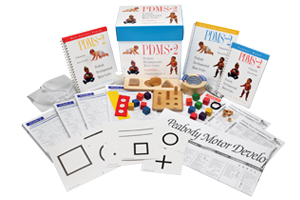Peabody Developmental Motor Scales, Second Edition (PDMS-2) combines in-depth assessment with training or remediation of gross and fine motor skills of children from birth through 5 years.
PDMS-3 is now available.
PDMS-3 is now available.
PDMS-3 is now available.
Peabody Developmental Motor Scales | Second Edition
PDMS–2
Peabody Developmental Motor Scales, Second Edition (PDMS-2) combines in-depth assessment with training or remediation of gross and fine motor skills of children from birth through 5 years.PDMS-3 is now available.
Choose from our formats
Test forms & reports
Booklets, record forms, answer sheets, report usages & subscriptions
2 options